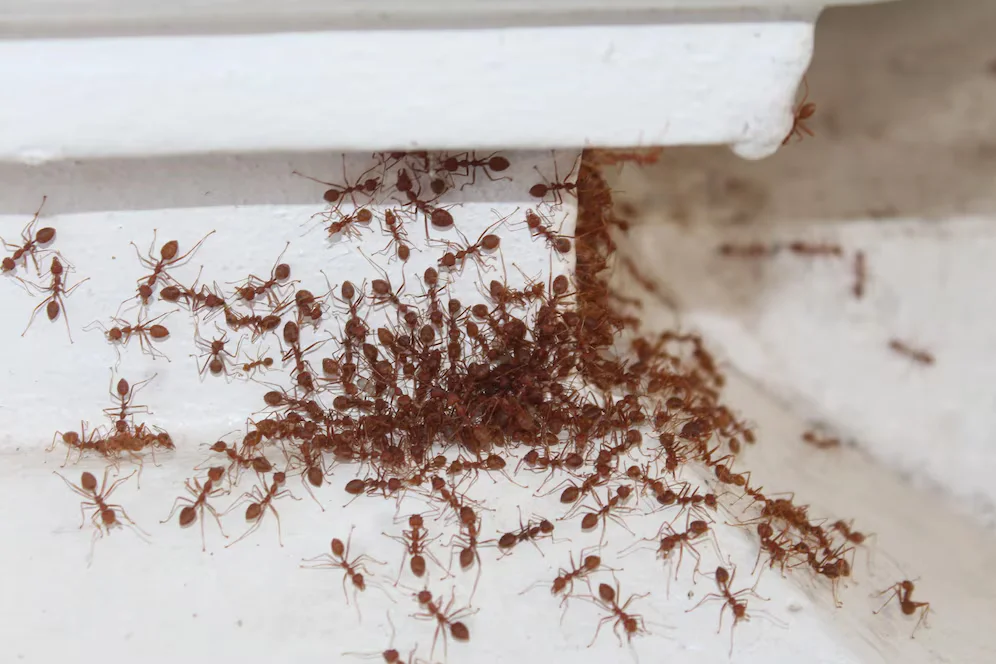-
Govind Bhawan,Kolkata - 700001
Govind Bhawan,Kolkata - 700001

Worried that termites come back after treatment? Learn the real reasons behind re-infestation and when to consult a well-known pest control company for lasting protection.
When your home has been treated for termites, it’s natural to feel a sense of relief. But weeks or months down the line, you might notice the return of familiar signs—damaged wood, mud tubes, or discarded wings. At that moment, one critical question arises:

The short answer is—yes, they can. But that doesn’t mean every treatment fails or every home is doomed to repeat infestations. With the right understanding and preventive strategies, termite re-infestation can be avoided.
This guide will walk you through:
Let’s break it all down.
Despite modern treatment methods, termites come back in some situations—especially if the conditions that attracted them in the first place haven’t changed.
Even with professional treatment, if the colony isn’t entirely eliminated—especially the queen—the infestation may resurface.
Termites can re-enter your property from external sources like nearby trees, soil, or even neighboring structures if barriers aren’t maintained.
Certain conditions naturally attract termites:
These factors act as open invitations for termites to return.

After treatment, it’s important to monitor your space for new signs of termite activity. Here’s what to look for:
If you’re seeing these symptoms, it’s time to act—quickly.
Treatment is just the first step. Long-term prevention requires consistency and proactive planning.
Schedule routine inspections, especially during the pre-monsoon and post-monsoon periods when termites are most active.
Barriers in soil around the foundation can prevent termites from entering. Make sure these are maintained or reapplied when needed.
Close off gaps in walls, floors, and foundations where termites can sneak in undetected.
While some homeowners attempt DIY termite control, prevention, and ongoing monitoring are best left to professionals. A trusted expert can evaluate your home’s condition, apply the right treatments, and recommend strategies tailored to your environment.
If you’re wondering who to trust, many homeowners turn to experienced pest control professionals known for delivering consistent results, using specialized techniques, and conducting thorough inspections to ensure long-term protection.
The difference often lies not just in the treatment itself, but in the experience and follow-through that only an established professional team can provide.
When you realize termites have returned after treatment, here’s your step-by-step action plan:
Being proactive in this phase can prevent far more expensive repairs down the road.

A: Chemical treatments can break down over time. If reapplication isn’t done or environmental conditions persist, termites may find their way back.
A: A good treatment can last between 5 to 10 years, but effectiveness depends on application quality, maintenance, and environmental factors.
A: While no material is completely termite-proof, treated wood, metal, and concrete are more resistant and help in prevention.
A: It’s strongly recommended, especially in termite-prone areas or if your home has had a history of infestations.
When it comes to termites, a single treatment doesn’t guarantee a lifetime of safety. The truth is, that termites come back if the root causes are not addressed or if follow-up strategies are ignored.
Regular monitoring, understanding the signs, and working with knowledgeable professionals is the best defense. Whether your home is new or old, termite protection is a continuous process—not a one-time fix.
And if you ever feel unsure about the right steps, it’s always smart to connect with a reputed service provider. Choosing a reputed pest control company ensures not just treatment—but long-term peace of mind.